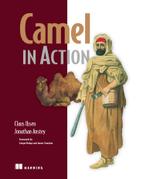Part 3. Out in the wild
With Camel’s core concepts under your belt, you may feel like you can tackle any integration problem with Camel. There is still more to cover, though. In this final part of the book, we’ll cover the topics that are useful when you know the core concepts and want to build something for the real world.
One concept you’ll encounter in many real-world applications is transactions. In chapter 9, we’ll explain how to use Spring’s transaction framework to let Camel routes participate in transactions.
In chapter 10, we’ll discuss the important, and sometimes complex, topic of concurrency. Understanding how to configure and tune threading in Camel is a must-read for performance-centric projects. We’ll also cover how you can improve the scalability of your Camel applications.
In chapter 11, we’ll discuss a topic you could really read right after part 1: how to develop new Camel projects. In this chapter, we’ll show you how to create new Camel projects, which could be Camel applications, custom components, or interceptors. The Scala DSL is also touched on here.
Once your application is running in the wild, you’ll need to know how to manage it and monitor its operations. Chapter 12 discusses topics in this category ranging from viewing the Camel logs to controlling Camel with JMX, to extending the notification mechanism in Camel so it works with your own custom monitoring application.
A topic you’ll need to read about before your Camel application is in production is deployment. Camel was designed as a framework, and, as such, it has virtually unlimited deployment possibilities. In chapter 13, we’ll discuss some of the most popular deployment options for Camel. We’ll also cover the various ways you can start and stop Camel.
In the last chapter of the book, chapter 14, we cover what we consider “extra features” of Camel: routing with beans and using remoting to hide Camel APIs. We think of these as extra features because they perform routing without using any of Camel’s DSLs and, in some cases, without any Camel APIs at all. They use a quite different approach than what has been discussed throughout the book.
